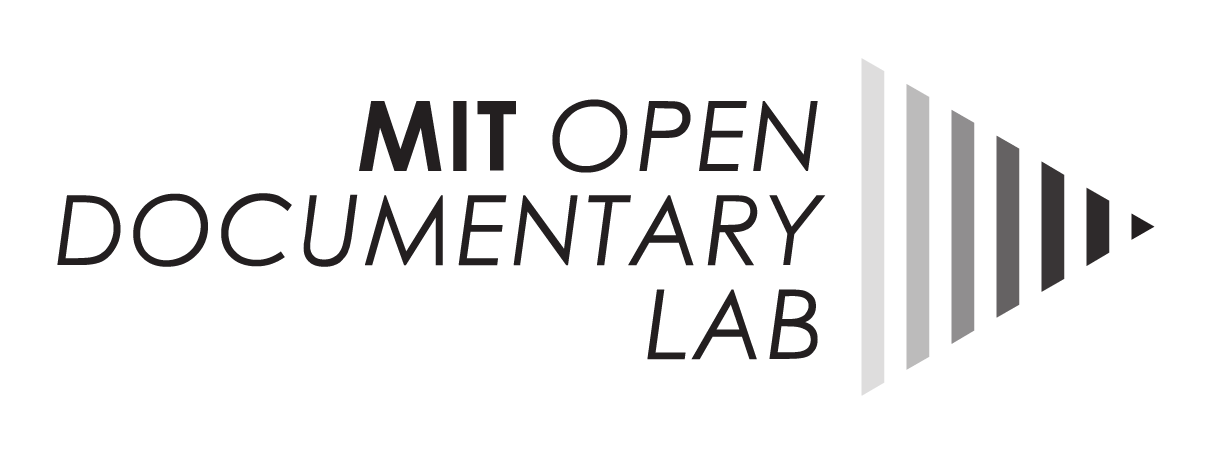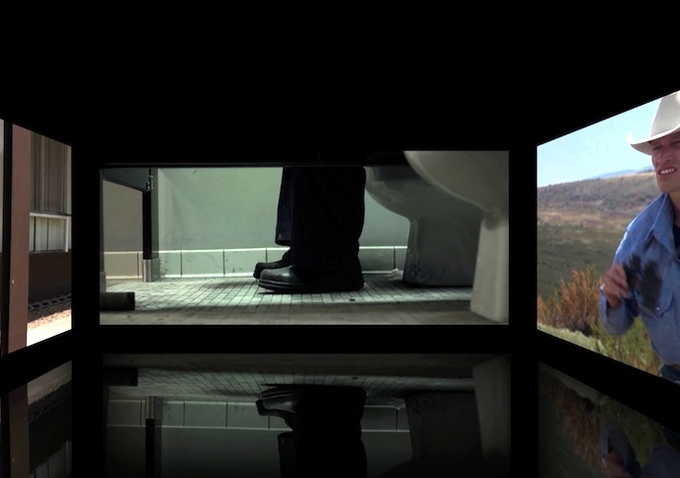
29 Jan On Sundance’s Surprise Breakout Star: TV
The OpenDocLab teamed up with Indiewire and the Sundance Institute to publish a series of articles about the 2013 Sundance New Frontier festival, written by OpenDocLab research assistants. This was previously published in Indiewire’s Criticwire blog, and is reposted with permission.
On Sundance’s Surprise Breakout Star: TV
Katie Edgerton
This year’s Sundance Film Festival has an unlikely breakout star — television.
The small screen is having a big moment. Once denigrated as the “idiot box,” TV is enjoying a cultural renaissance. Ever since Tony Soprano walked into Dr. Melfi’s office over a decade ago, declarations that we’re living in a golden age of television storytelling have been loud and routine. With shows like “Breaking Bad,” “Louie,” and “Homeland” crowding the airwaves, some brave souls have even dared to claim that today’s TV stories are as compelling as the movies, if not more so.
It’s hard to imagine a television series premiering at Sundance even a decade ago. But on Monday, Jane Campion’s seven-part “Top of the Lake” became the first TV show to screen at the festival. It was a natural fit for Sundance — Campion is best known for her work in independent film, namely “The Piano” and, most recently, “Bright Star.” It likely didn’t hurt that “Top of the Lake” is set to premiere on the Sundance Channel in March.
Television series pose a programming challenge, and Sundance responded by showing “Top of the Lake: in a marathon seven-hour viewing session with two intermissions. It stars “Mad Men”‘s Elisabeth Moss as a detective investigating the disappearance of a teenage girl, and also features longtime Campion collaborator Holly Hunter as a small-town mystic. Hunter won an Oscar for her performance in Campion’s “The Piano,” but lately she’s been more visible on the small screen, helming TNT’s “Saving Grace.”
Hunter and Campion aren’t the only film veterans currently working in TV. They’re joined by the likes of Richard Linklater (“Bernie” and Hulu’s “Up to Speed”) and Mike White (“Chuck & Buck” and HBO’s “Enlightened”) — both of whom appeared with Campion on Saturday’s Sundance panel, “Power of Story: Independence Unleashed.” Centering on indie filmmakers’ work in TV, the panel seemed to suggest that television is a natural fit for independent filmmakers. Television’s serial format lends itself to accretive stories and characters that develop over time, providing a built-in opportunity for the rich characterizations and measured storytelling style that has characterized so many independent films. Production realities also play a role in some filmmakers’ interest in TV. As film studios favor franchise pictures over mid-budget adult dramas, those types of stories have found a home of television.
Television’s influence even surfaced at New Frontier, the Sundance Festival’s exhibition of experimental work. Meredith Danluck’s four-channel film “North of South, West of East,” which screened in the New Frontier microcinema, plays as a homage to TV storytelling.
“This project came about when I broke my leg and I was trapped on a couch watching lots of TV,” Danluck told me. “I couldn’t consume enough television. At the same time, I was reading about Maya Deren, Chantal Akerman, and durational cinema. These two very opposite things led to this idea of combining the most inaccessible, experimental cinema with the most exciting, most fun cinema — which is actually TV.”
New Frontier’s microcinema was converted into a specially equipped screening room for “North of South, West of East.” Audiences were limited to 20. A cluster of swivel chairs sat in the center of the room, so that viewers could easily shift their attention between the four screens on which the film’s action unfolds. Each screen follows a character — Yvonne (Sue Galloway), a down-on-her-luck actress; Cass (Ben Foster), an equally downtrodden factory worker; Dale (James Penfold), a Texas cowboy; and Miguel (Erik Quintana), a Mexican immigrant. As “North of South, West of East” develops, these four characters’ stories intersect, affecting each other.
The film’s experimental setup supports its narrative goals. In “North of South, East of West,” Danluck captured “the addictive quality of episodic narrative” in as immersive a way as possible. Danluck’s film gives agency to its audience, letting viewers choose where to direct attention. In a certain sense, each audience member of “North of South, East of West” creates a personal version of the film. No two viewings are the same, and each encounter with the film reveals new nuances to the characters. While all four screens are full of compelling imagery, Danluck guides “North of South, East of West”‘s audience using sound. The screens share one soundtrack, which ties the stories together and cues viewers when to direct attention to a particular image.
“I wanted the characters’ lives to extend past the dramatic moments,” said Danluck. Television, she explained, gives its characters a sense of history. As viewers watch a TV series for months or even years, there is a sense of the character’s lives extending beyond the screen. Danluck’s film captures those everyday moments, usually unfilmed. As “dramatic” action unfolds on one screen, viewers could also watch Cass snooze in a bathroom, Dale doze in his jail cell, or Yvonne drift moodily through a swimming pool.
Despite its measured pace, “North of South, East of West” builds to a climax worthy of the most nail-biting TV show. Celebrating television’s continuing storylines, Danluck denies her audience a simple ending. “In a traditional narrative structure, there’s resolution,” she said. “Episodic narrative ends on plot point two without any resolution.” With their stories suspended midstream, the characters of “North of South, East of West” challenge the film’s audience to engage with their continuing story, as well as their lives beyond the screen.
Katie Edgerton is a research assistant at the MIT Open Documentary Lab and a graduate student in MIT’s Comparative Media Studies program.




